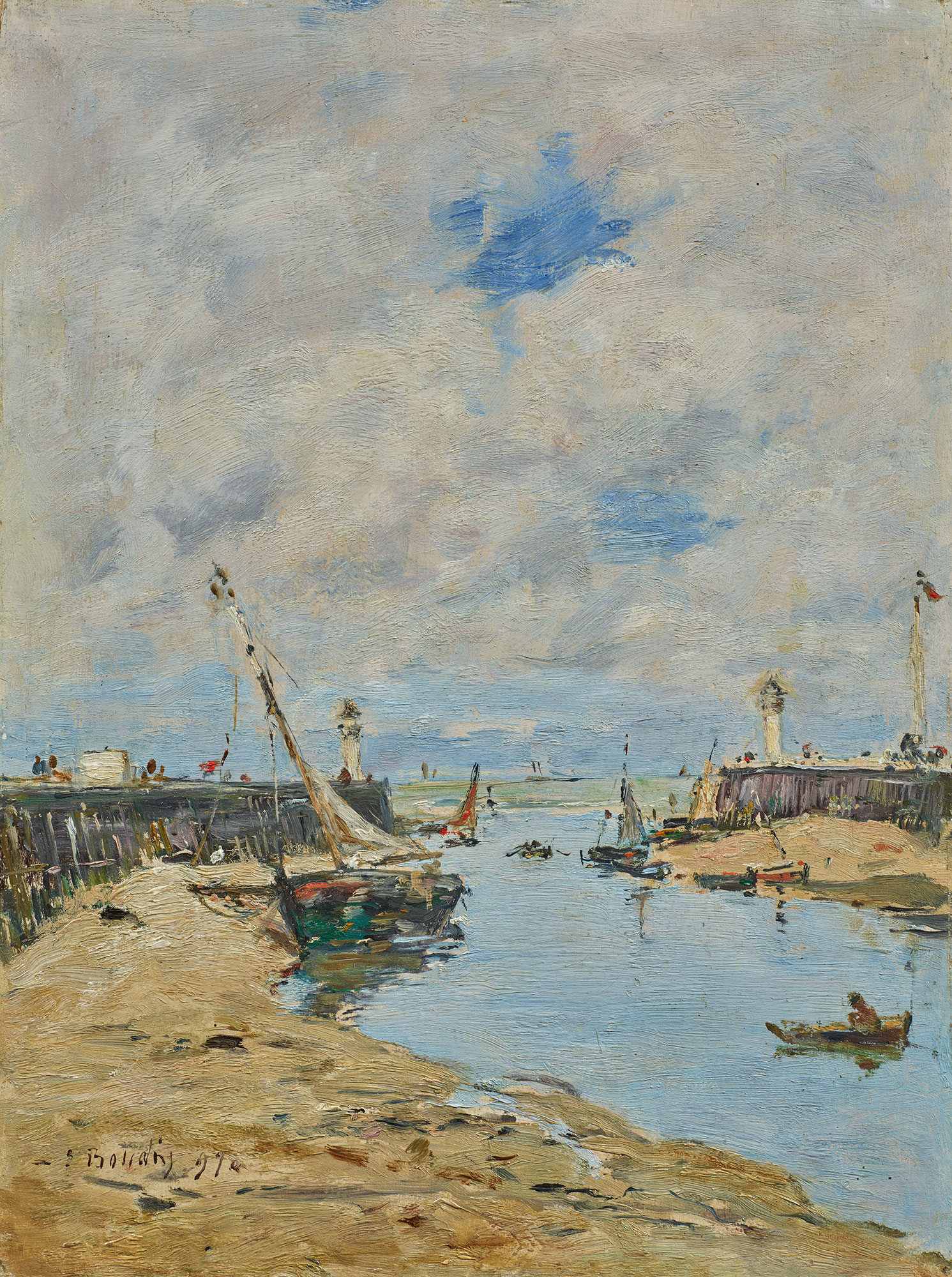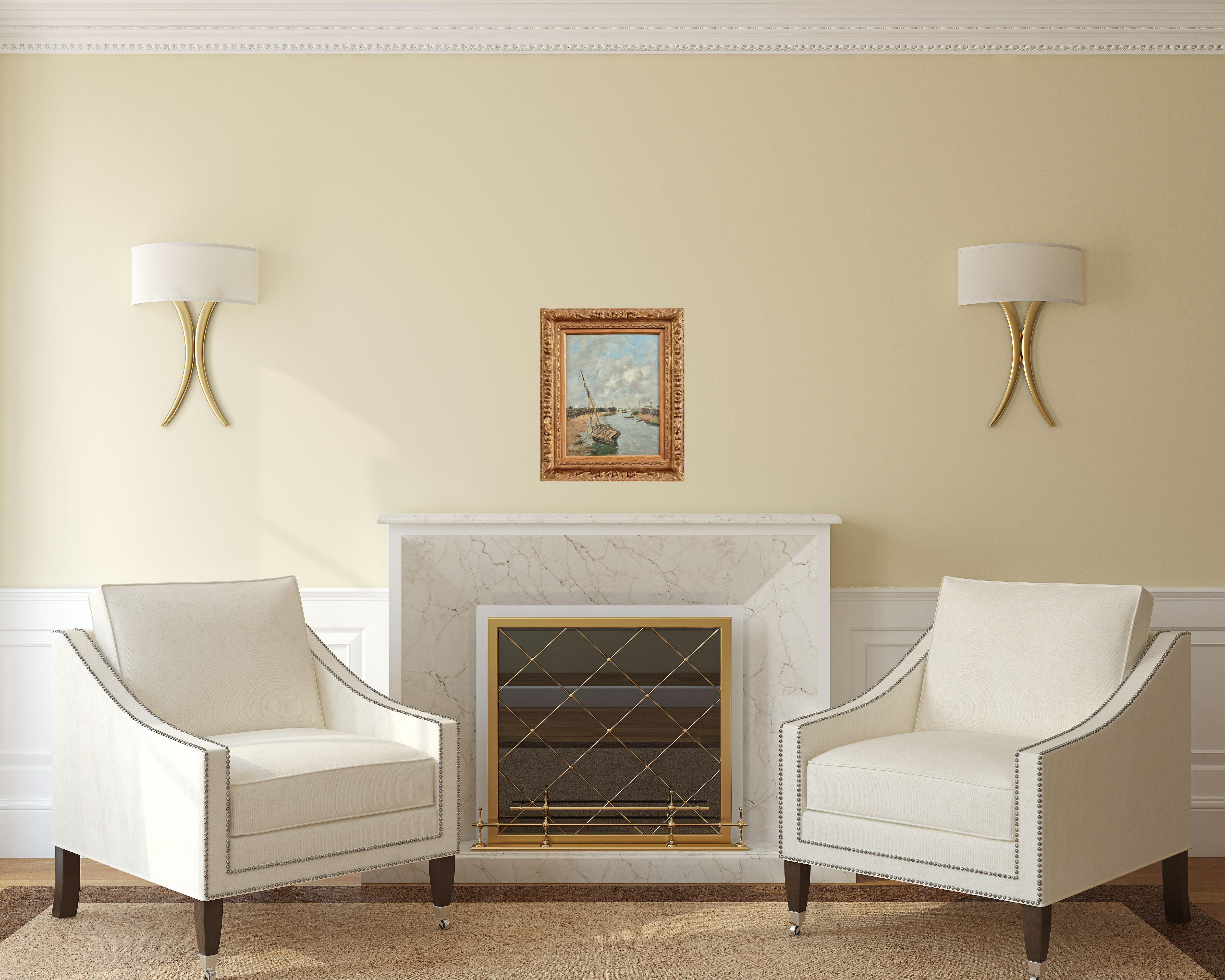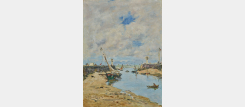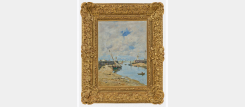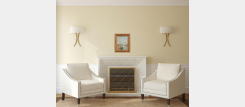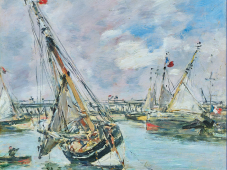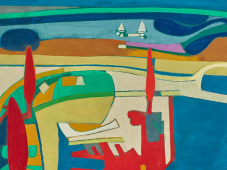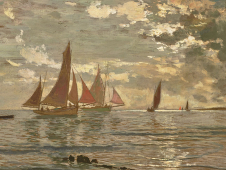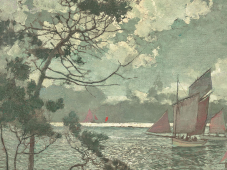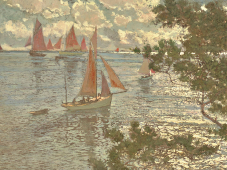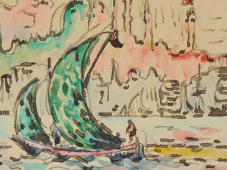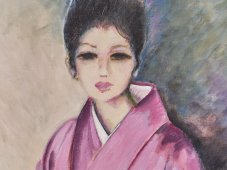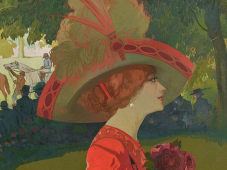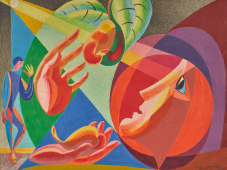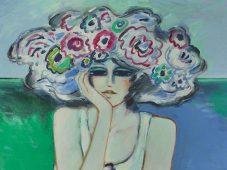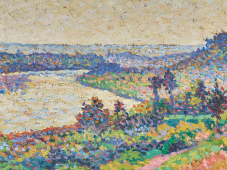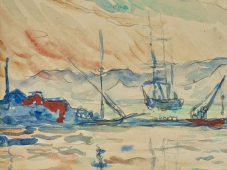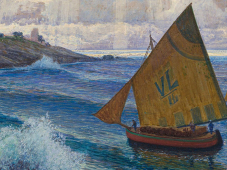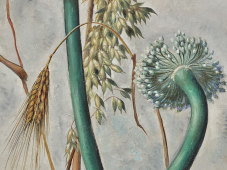The pier at low tide, Trouville
Description of the artwork
At the end of his life, crowned with success, Boudin ventured down new paths, claiming to ‘leave [his] painting [...] the aspect of the sketch’. This work is one of a series painted in Trouville and Deauville between 1894 and 1897. In the views taken in Trouville, Boudin liked to position himself at the end of the channel, facing the entrance to the port, so that the landscape is often framed, on the left and right, by the two jetties that we find in our work. A single jetty closes off almost the entire horizon. It is, however, one of those modest Normandy fishing ports. The small fishing boats in the foreground are evidence of this, as is the detail of the fisherman bringing in his small boat in the right foreground.
Boudin's oft-repeated depiction of this spectacle is used here as a pretext for a swiftly moving composition in which the sky and sea, painted in the same shades of blue, seem to merge. The reflection of the clouds gives a horizontal rhythm to the calm water of the basin, in opposition to the turbulent sky, ‘dappled’ with clouds. The boats punctuate the composition and link the space to the sea. The whole scene is bathed in the same transparent white light. Boudin captures the movement of things at the same time as their shape and colours: the rising cloud, the shimmering water, the passing boat, and he writes a synthesis of elements and beings in action.
Origin
Atelier Boudin sale, Hôtel Drouot, Paris, March 20-21, 1899, lot 16
Galerie Lorenceau, Paris
Private collection, Spain
Literature
Robert Schmit, Eugène Boudin 1824-1898, Tome III, Paris 1973, no.3627, illustrated p. 384
75008 Paris, France
Saturdays from 2 to 7 p.m.



